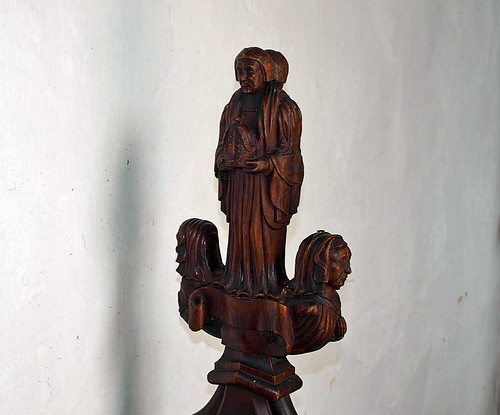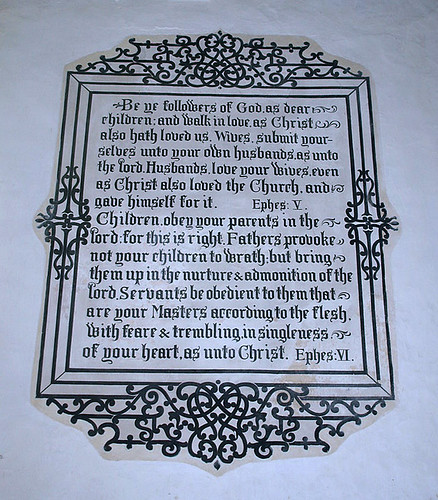ST MARY. Round tower, round to the top. Half-way up traces of large blind arcading, and on the apexes of the arches a second tier. It is likely that this is a sign of Anglo-Saxon date. Nave and chancel, windows mostly Perp, all renewed. - FONT. Octagonal. The stem with panels with two fleurons in each, one on top of the other. Bowl with a big flower in each panel. - FONT COVER. Small, Jacobean, just with an openwork obelisk. - SCREEN. Dado only, and largely C19. But what remains seems to indicate a C14 date. Blank intersected ogee tracery on shafts instead of mullions. - PLATE. Norwich-made Chalice and Paten, 1567. - MONUMENTS. In the chancel S wall, set in the sedilia, an Elizabethan tomb-chest with three shields in cusped fields. Back wall with two columns still carrying an ogee arch. - Thomas Newce and wife d. 1629 and d. 1632. Alabaster tablet.
TASBURGH. It has thatched cottages and charming houses, and by the ford at one end of the village stands Tasburgh Hall, a modernised Jacobean house among the trees. Where the church rises above the village Roman soldiers stood sentry on the hill in a great camp of 24 acres above the winding River Tas. An avenue of Irish yews leads us to the church, with a round tower which either the Saxons or the early Normans built; its height was raised about 1400, when it was given a crude round-headed window. The arch opening to the nave is later, and the hammerbeam roof of the nave, with 14 cherubs at the end of the beams, is modern. Curiously placed under a chancel window is a tomb of Elizabeth Baxter, who died in 1587 at Rainthorpe Hall, the old manor house in wooded grounds through which the river flows a mile away. An epitaph tells us of another of Norfolk’s many old rectors, Henry Edmund Preston, who lived from the eve of Trafalgar to the eve of Queen Victoria’s Diamond Jubilee, and was here for 60 years.



No comments:
Post a Comment